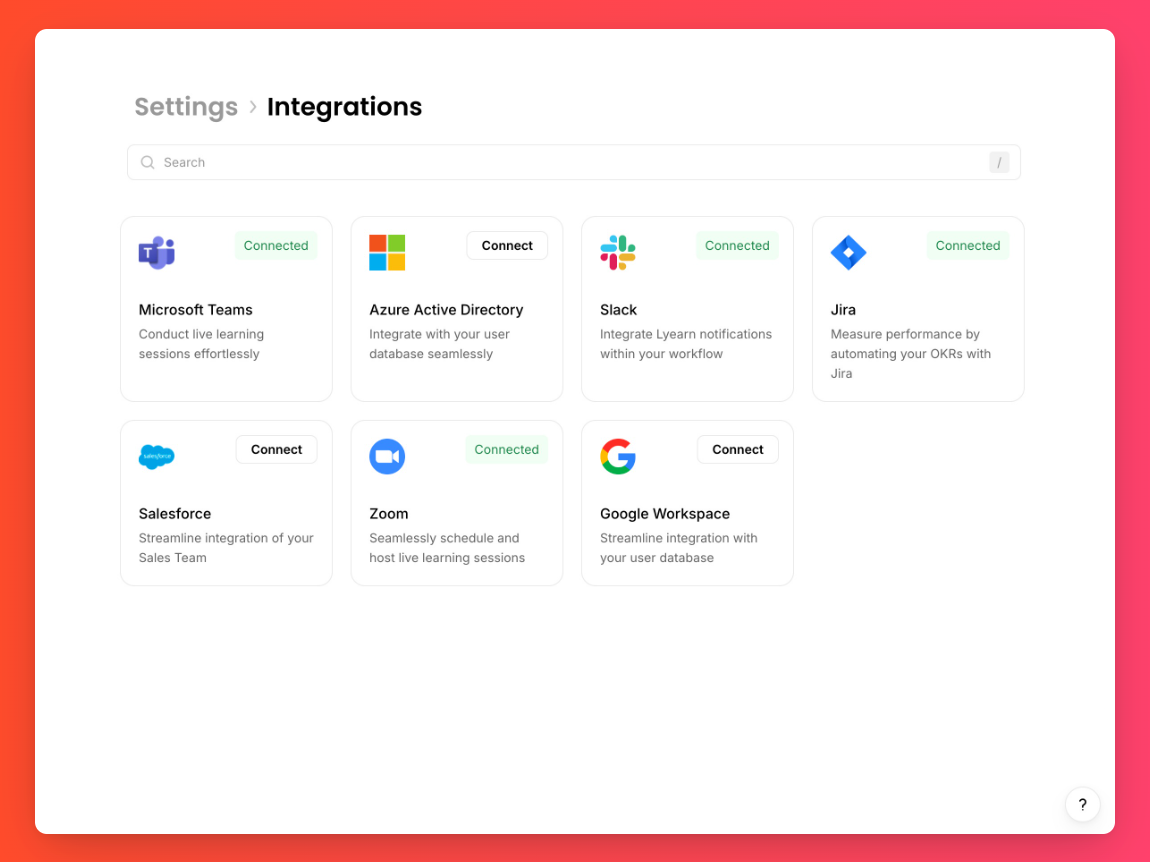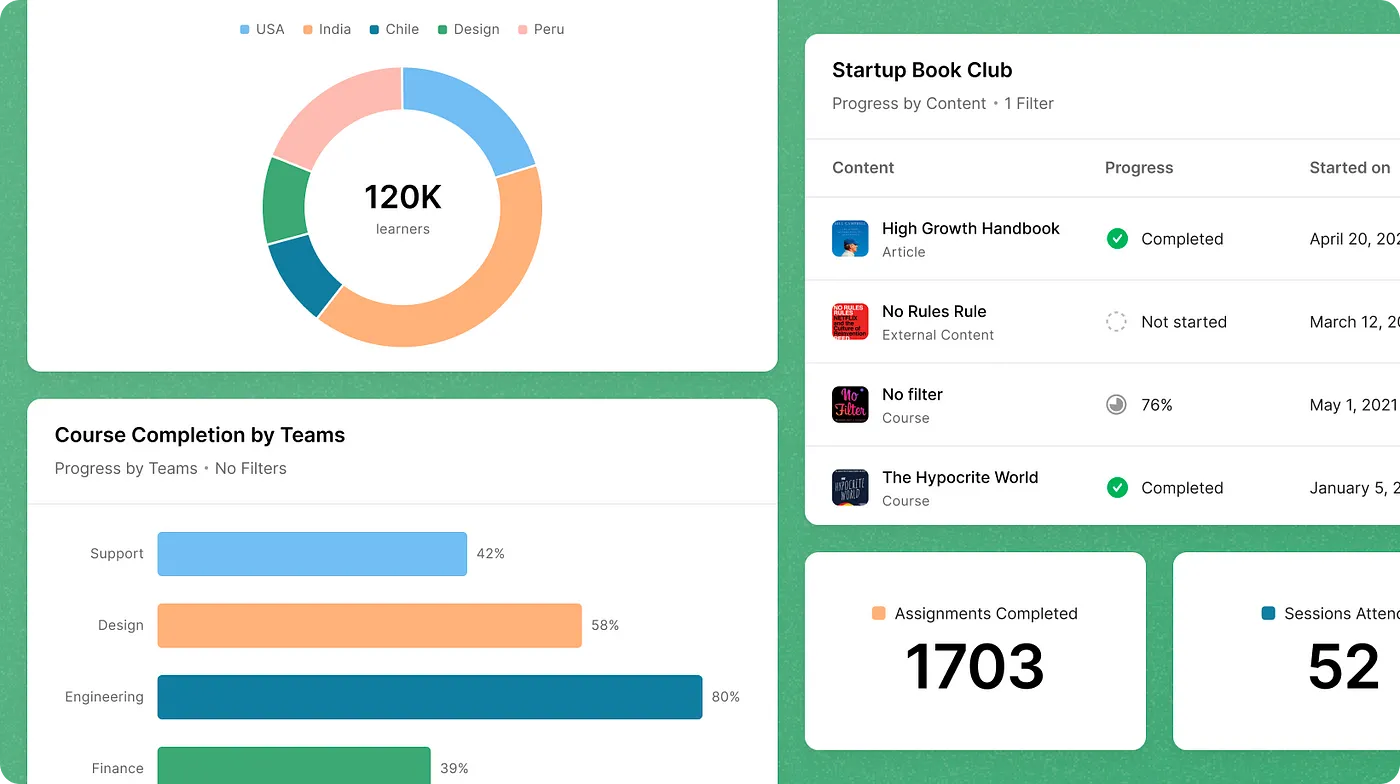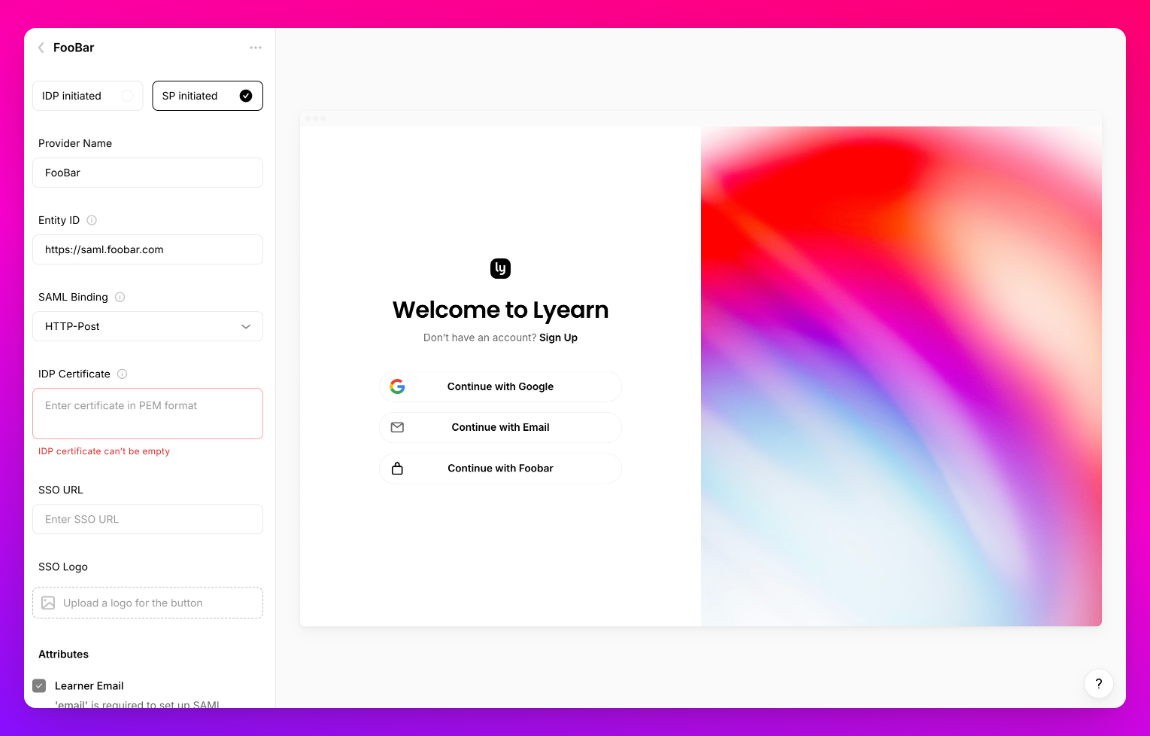Lyearn
My journey at Lyearn was marked by significant contributions across various domains, from backend optimization to infrastructure management and AI implementation.
Product Engineer
GET /v1/workExperience?company=lyearn
{
"role": "Product Engineer",
"startDate": "01-01-2021",
"endDate": "01-04-2022",
"skills": [
"GraphQL",
"MongoDB",
"Redis",
"Kafka",
"gRPC",
"NodeJS",
"TypeScript"
],
"status": 200
}
Key Highlights
When I joined Lyearn, one of our primary challenges was system performance. I took on the task of elevating our backend system, achieving almost a 30% improvement in overall latency of core APIs. This wasn't just about speed; it was about setting best software design practices for the team, creating a foundation for scalable growth.
As our system grew, so did our need for robust infrastructure. I pioneered the establishment of core infrastructure components, ensuring seamless running and easy monitoring of micro-services on Kubernetes. This infrastructure cycle included implementing comprehensive metrics and monitoring systems, giving us very detailed visibility into our application's performance.
Integrations Module

To expand Lyearn's capabilities, I designed and developed a generic integrations module with extensible APIs. This module expanded our third-party application integration efficiency by 50%, opening up new possibilities for our platform.
Product Engineer II
GET /v2/workExperience?company=lyearn
{
"role": "Product Engineer II",
"startDate": "01-04-2022",
"endDate": "01-04-2023",
"skills": [
"REST",
"PostgreSQL",
"Elasticsearch",
"Kubernetes",
"Terraform",
"Helm",
"ELK Stack",
"Prometheus Monitoring Stack"
],
"status": 200
}
Key Highlights
Reporting Engine

One of the most impactful projects was the development of a dynamic yet generic reporting module. This module could process tens of millions of documents in parallel, providing insightful data using system-generated metrics. It was a game-changer for our data analysis capabilities. You can find the details of the implementation in this Medium blog.
BOYS (Bring Your Own SAML)

Security was always a top priority. I implemented a generic SAML (Security Assertion Markup Language) solution, enhancing our authentication processes and making it easier for enterprise clients to integrate with our system.
Senior Product Engineer
GET /v3/workExperience?company=lyearn
{
"role": "Senior Product Engineer",
"startDate": "01-04-2023",
"endDate": "15-01-2024",
"skills": [
"Federated GraphQL",
"Golang"
],
"status": 200
}
Key Highlights
Optimizing for Scale and Performance
As Lyearn grew, we faced new challenges in scalability and performance. I led several key initiatives to address these:
- Tenant Creation Optimization: We achieved a remarkable feat of reducing tenant creation time for lyearn.com to just 1-2 seconds down from a manual effort of about 30 minutes, significantly improving our onboarding process.
Well the best way to experience it is by trying it out 😉 lyearn.com.
- Database and Search Optimization: I maintained authoritative expertise on Elasticsearch, optimizing query performance and developing custom Elasticsearch plugins. This resulted in a 37% improvement in query response time. I also stabilized Elasticsearch by adding a distributed locking gatekeeper, adding a node level cache and partitions for better performance.

- Load Testing: I conducted extensive load tests, stress tests and SOAK tests, ensuring our system could handle high-stress scenarios.
Architectural Transformation
As our system complexity grew, I orchestrated a strategic transition to Federated GraphQL architecture from a single GraphQL server. This move enhanced service scalability and promoted separation of concerns, allowing our team to work more efficiently on different parts of the system.
Technology Migration
I identified critical sections in core API code which were CPU intensive and creating a cascading effect of increased waiting times on incoming request in NodeJS and executed a migration to Golang. This transition resulted in an impressive 80% reduction in processing time, showcasing the importance of choosing the right tool.